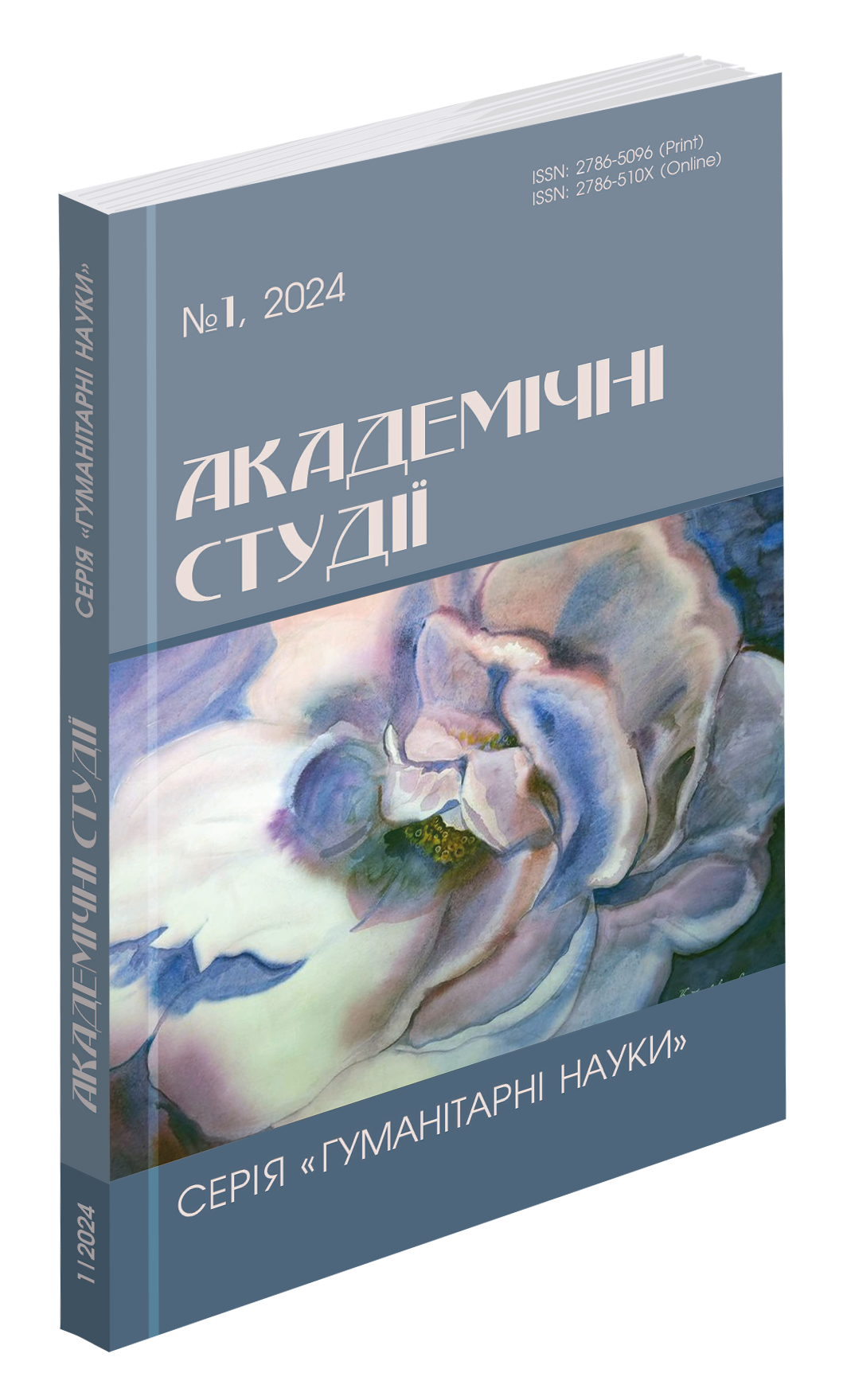Abstract
The purpose of our research is: to show the concept of predicativeness in various senses, such as a structural feature, a basic feature of any sentence or statement as a speech frame, a sign of a certain kind (or a type), which is explained, first of all, through the form of the verb, which, in turn, is characterized by specific categories of time, a person and a manner; to explain predicativeness as a syntactical modality, a special quasi-communicative characteristic of a sentence. We think that predicativeness corresponds to modality. We’ve shown, that the essence of the linguistic transformation is that during the application of the predicative rule, the linguistic presentation of the secondary predicate in the structure of the secondary predication takes place, which in any case leads to the formation of a separate predicational unit and, above all, indicates that the sentence with these structures contain several planes (or aspects) of predication. Thus, analyzing the object-predication structure as Object Infinitive Complex using transformational analysis, we refer the Object Predicational Structure to the Structure of Secondary Predication, which: it is a binary structure consisting of a Secondary Subject and a Secondary Predicate. The Secondary Subject is expressed by a noun in the Nominative Case or a Pronoun in the Objective Case. The Secondary Predicate is expressed by the indefinite form of the verb (the Infinitive, Participle I, Participle II, a Gerund) or a non-verbal part of speech; depends on the structure of the primary predication, performing the function of a Complex Object in the sentence.
References
Alahmadi, A. & Foltz, A. (2020). Effects of Language Skills and Strategy Use on Vocabulary Learning Through Lexical Translation and Inferencing. Journal of Psycholinguist Research, 49(6), pp. 975–991. https://doi.org/10.1007/s10936-020-09720-9
Антюхова, Н.І. (2018). Структури вторинної предикації у філологічній науці. Наукові записки національного університету «Острозька академія». Серія «Філологія». Вип. 1 (69). Ч. 1. С. 7–11.
Chen, Si, Zhao, J., de Ruiter, L., Zhou, J. & Huang, J. (2022). A burden or a boost: The impact of early childhood English learning experience on lower elementary English and Chinese achievement. International Journal of Bilingual Education and Bilingualism, 25(4), pp. 1212–1229. https://doi.org/10.1080/13670050.2020.1749230
Collins, A. Brian, Sanchez, M. & Espana, C. (2023). Sustaining and developing teachers’ dynamic bilingualism in a redesigned bilingual teacher preparation program. International Journal of Bilingual Education and Bilingualism, 26(2), pp. 97–113. https://doi.org/10.1080/13670050.2019.1610354
El-Zawawy, A.M. (2021). On-Air Slips of the Tongue: A Psycholinguistic-Acoustic Analysis. Journal of Psycholinguist Research, 50(3), pp. 463–505. https://doi.org/10.1007/s10936-020-09755-y
Forsyth, F. (2023). The Odessa file. https://readerslibrary.org/wp-content/uploads/The-Odessa-File.pdf
Guerrero, M. (2023). State of the art: a forty-year reflection on the Spanish language preparation of Spanish-English bilingual-dial language teachers in the U.S. International Journal of Bilingual Education and Bilingualism, 26(2), pp. 146–157. https://doi.org/10.1080/13670050.2020.1865257
Cui, G., Wang, Y. & Zhong, X. (2021). The Effects of Suprasegmental Phonological Training on English Reading Comprehension: Evidence from Chinese EFL Learners. Journal of Psycholinguist Research, 50(2), pp. 317–333. https://doi.org/10.1007/s10936-020-09743-2
Greco, M., Canal, P., Bambini, V. & Moro, A. (2020). Modulating “Surprise” with Syntax: A Study on Negative Sentences and Eye-Movement Recording. Journal of Psycholinguist Research, 49(3), pp. 415–434. https://doi.org/10.1007/s10936-020-09691-x
Hamedi, S.M. & Pishghadam, R. (2021). Visual Attention and Lexical Involvement in L1 and L2 Word Processing: Emotional Stroop Effect. Journal of Psycholinguist Research, 50(3), pp. 585–602. https://doi.org/10.1007/s10936-020-09709-4
Huang, T., Loerts, H. & Steinkrauss, R. (2022). The impact of second- and third-language learning on language aptitude and working memory. International Journal of Bilingual Education and Bilingualism, 25(2), pp. 522–538. https://doi.org/10.1080/13670050.2019.1703894
Mykhalchuk, N. О. & Ivashkevych, Е.Е. (2019). Psycholinguistic Characteristics of Secondary Predication in Determining the Construction of a Peculiar Picture of the World of a Reader. Psycholinguistics. Психолінгвістика. Психолингвистика. Вип. 25(1). С. 215–231. https://doi.org/10.31470/2309-1797-2019-25-1-215-231
Oh, J., Bertone, A. & Luk, G. (2023). Multilingual experience and executive functions among children and adolescents in a multilingual city. International Journal of Bilingual Education and Bilingualism, 26(2), pp. 158–172. https://doi.org/10.1080/13670050.2022.2093098
Phani Krishna, P., Arulmozi, S., Shiva Ram, M. & Mishra, R. Kumar (2020). Sensory Perception in Blind Bilinguals and Monolinguals. Journal of Psycholinguist Research, 49(4), pp. 631–639. https://doi.org/10.1007/s10936-020-09689-5
Rezaei, A. & Mousanezhad Jeddi, E. (2020). The Contributions of Attentional Control Components, Phonological Awareness, and Working Memory to Reading Ability. Journal of Psycholinguist Research, 49(1), pp. 31–40. https://doi.org/10.1007/s10936-019-09669-4
Tran, A. H., Tremblay, K.A. & Binder, K.S. (2020). The Factor Structure of Vocabulary: An Investigation of Breadth and Depth of Adults with Low Literacy Skills. Journal of Psycholinguist Research, 49(2), pp. 335–350. https://doi.org/10.1007/s10936-020-09694-8
Wong, Y. K. (2021). Developmental Relations Between Listening and Reading Comprehension in Young Chinese Language Learners: A Longitudinal Study. Journal of Psycholinguist Research, 50(2), pp. 261–273. https://doi.org/10.1007/s10936-018-9619-y

